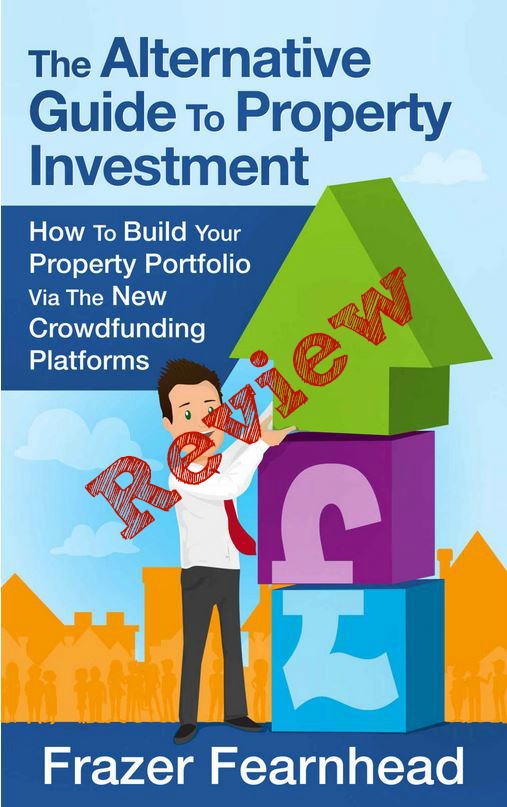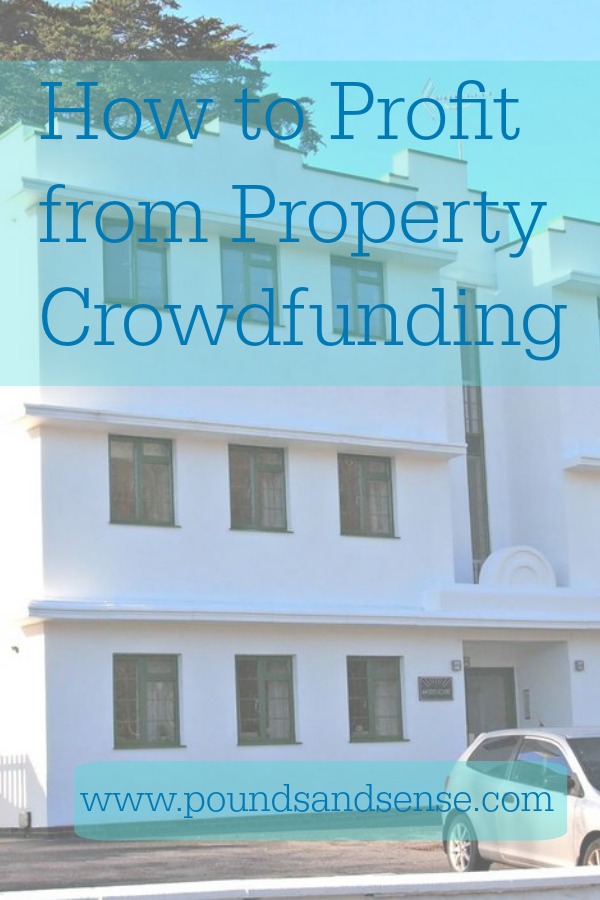Review: The Alternative Guide to Property Investment by Frazer Fearnhead
Today I’m reviewing a guide to property crowdfunding that has just been published by Frazer Fearnhead. The full title is The Alternative Guide to Property Investment: How to Build Your Property Portfolio via the New Property Crowdfunding Platforms.
The book is available in both hard copy and Kindle e-book form. I bought the e-book version, partly because (I admit it) I’m a cheapskate, but also because I wanted to get my hands on it as quickly as possible.
For those who may not know, Frazer is the founder and managing director of The House Crowd, one of the UK’s leading property crowdfunding platforms. In his book, he explains what property crowdfunding is and the pros and cons compared with other forms of investment. The book is organized in twenty-three main chapters (most of them quite short), as follows:
- Why Invest in Property at All?
- How Much Diversification is Sensible?
- Why Property Investment is the Best Vehicle to Supplement Your Pension
- Establishing Your Own Investment Criteria
- Capital Growth vs Cash Flow
- Residential vs Commercial
- How to Beat the Averages and Give Yourself the Best Chance of Making a Successful Property Investment
- The UK Property Market – 2017 and Beyond
- Passive Property Investment
- A Brief History of the Alternative Finance Industry
- All About Equity Crowdfunding
- How Does Property Crowdfunding Compare with Traditional Property Investment?
- All About Peer-to-Peer Secured Lending
- Commonly Asked Questions About Property Crowdfunding
- Comparison: Equity Crowdfunding vs Peer-to-Peer
- What Returns Can You Expect?
- Taxation
- How to Decide Whether Crowdfunding is Right for You
- Key Factors to Consider When Choosing a Property Crowdfunding Platform
- Using Your Pension to Invest via Crowdfunding
- Crowdfunding Your Own Property Deals
- FCA Regulated Companies
- In Conclusion
My Review
The Alternative Guide to Property Investment is well written and neatly presented, with illustrations where relevant. It covers most things someone new to property crowdfunding would want to know. As I have been investing this way for several years (using The House Crowd and other platforms such as Property Partner and Crowdlords) quite a lot of the information was familiar to me already. Nonetheless, it is valuable to get Frazer’s perspective as one of the pioneers of property crowdfunding, and there is plenty of food for thought even for seasoned property investors.
Clearly, as the MD of The House Crowd, Frazer has a vested interest in promoting the attractions of property crowdfunding. Nonetheless, he gives a balanced view of the pros and cons and is not afraid to state that it does carry a degree of risk. I agree though with his view that people should not automatically rule it out because of this. While property crowdfunding is not as safe as putting your money in a bank savings account, the potential returns are much higher. And a variety of safeguards exist, including the fact that most property crowdfunding (except for the most speculative development projects) is secured by bricks and mortar. But of course, you should only invest in property crowdfunding as part of a balanced portfolio.
Another aspect of this book I liked is that it explains the range of investment opportunities now available in property crowdfunding. These include equity crowdfunding – the original and most familiar form of property crowdfunding – where investors purchase shares in a property and receive a proportion of the rent paid as well as capital appreciation when the property is sold. But the book also covers secured lending – an increasingly popular option – where investors provide cash to property owners and get the capital and interest back at the end of the loan period (typically 6 to 12 months). And finally, the book discusses property development projects, which offer greater potential profits but also involve bigger risks.
Another important topic covered in the book is taxation, and specifically how property crowdfunding can be used to make the most of your tax-free allowances. The latter include savings interest, dividends, and capital gains. This is a feature of property crowdfunding that can be highly advantageous for investors.
If you are new to property crowdfunding, The Alternative Guide to Property Investment will provide a concise and easily digestible introduction to this field, from someone who really does know this business inside and out. The asking price is modest, and all profits from sales are going to the charity Lifeshare who work with the homeless and vulnerable in Manchester (where Frazer was born).
If you have any comments about The Alternative Guide to Property Investment (or property crowdfunding more generally) please feel free to post them below and I will do my best to answer them. You might also enjoy reading my earlier post How to Profit from Property Crowdfunding, which sets out the basics of how property crowdfunding works.
Disclosure: I have a range of investments with The House Crowd and other property crowdfunding platforms, including development loans, secured lending and equity crowdfunding. I am also a shareholder in The House Crowd. I firmly believe that property crowdfunding can be a worthwhile addition to any investor’s portfolio, and have put my own money where my mouth is!






